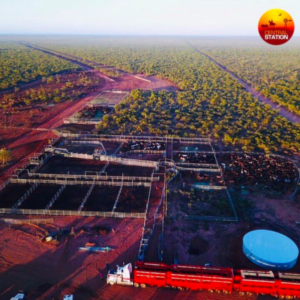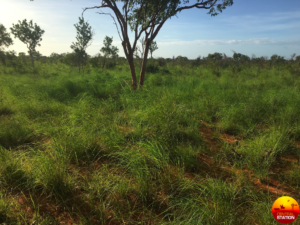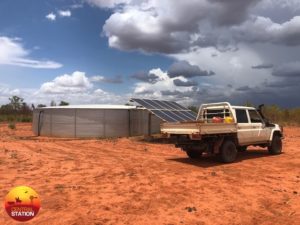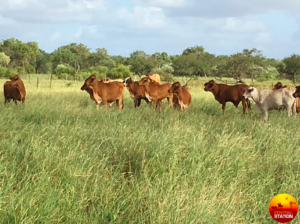A Change in the Weather
Written by Andrew Miller – Overseer, Shamrock Station
Current weather events have recently demonstrated in all its entirety the absolute control of which we as a collective (ie. the human race) are susceptible to the outcomes of future weather patterns. From local Government to Wall Street, the flow on effects of natural disasters are now impacting on the world economy. So, where does this leave the humble Australian pastoralist? And what changes in our own backyard are needed for a long-term sustainable future?
We’re all aware there is no simple answer. With such a wide range of land systems across Australia, overall management strategies cannot be bundled into a single package, which in turn leads us back to working as a collective and utilising the information which best suits individual situations.

My name is Andrew Miller and I am employed as the Overseer of Shamrock Station by Argyle Cattle Company, which comprises of four pastoral leases throughout the Kimberley. These include Moola Bulla, Mt. Amhurst, Beefwood and Shamrock Stations. Over the last 18 months we’ve received well below our average rainfall, which in turn resulted in discussions within management of how best to reduce the impact of drought. Several actions were put into place: agistment, capital improvements, movement of stock between stations, early weaning, and decreasing overall cattle numbers through sale. The capital improvements included new bores being drilled and equipped, inground tanks being excavated and fencing previously unused country.
Although some of these strategies are not available to all pastoralists, as capital improvements cost money and not everyone has the option of two or more properties, this is what worked for Argyle at the time. We’re now into late January and have been fortunate to have already received a good start to the wet season with the hope of more rain to come.

As a company we must now ask ourselves: what changes in our own backyard can we make to be prepared for future climate events? With good management and a bit of luck, Argyle Cattle Company as a whole was able to navigate successfully through an unusually dry period. The all year-round supply of a supplements including Phosphorous and Sulphur proved to be of great value towards the end of the year. Cattle with access to feed with very little nutritional value were still showing good levels of energy even when fat scores had fallen to a 2.5 and below. A multi mineral lick block was fed in conjunction with Urea and also a loose lick with a high Phosphorous base – these were fed in lick stations together as a free choice option. Overall, we found most cattle consumed all types of lick fairly evenly with the loose lick being favoured by a small margin. During the mustering period all cattle processed were also needled with an all-round worming and tick injection, botulism and B12 with Selenium which covers the overall health and wellbeing of the animal.
Increasing profits and productivity start with animal welfare, this being the most important part of all successful beef operations. A low stress stock handling approach is foremost in the imprint training of the entire herd. The temperament and wellbeing of the herd will be greatly affected by the way they are handled in the paddock, just as importantly as in the cattle yards. With the supply of lick all year-round cattle will become desensitised towards vehicles and humans, which in turn alleviates stress, increases weight gain and profits.

With the overall costs of managing a beef herd always on the increase, diversity within the cattle industry is now playing an important role. Maximising profit through quality beef, increased carcass weights and increased calving percentages is a priority. By working together and pooling resources available the most informative and sustainable decisions can be made. Such ideas for improving lines of cattle can be as simple as introducing new blood lines regularly so as to keep genetics strong, or vaccines such as Vibrox for the control of STI’s in joiner heifers or speying. Weaning is also an opportunity to get to know our cattle and for our cattle to get to know us.
Once paddocks are established and the herd is at full production the environmental impact on the country lessons greatly, with the spelling of paddocks, rehabilitation and controlled burning becoming easily managed. The benefits include increased nitrogen levels in soil through fire, and erosion control in heavily grazed areas through decreasing cattle numbers. Controlled studies can also be conducted on improved pasture, cross breading programs and supplement feeding in alternate land systems, the long-term result being a sustainable beef operation that works in conjunction with the land and people for generations to come.

Innovation within the cattle industry will be the key to staying in touch with an ever-changing climate. Information shared with ideas debated and tested are in my opinion the most powerful tools currently available. The demand for environmental accountability has quickly become a major issue throughout the general public, and by communicating through forums such as Central Station and other media outlets, we will be able to navigate the uncertain roads ahead as a unified industry.
